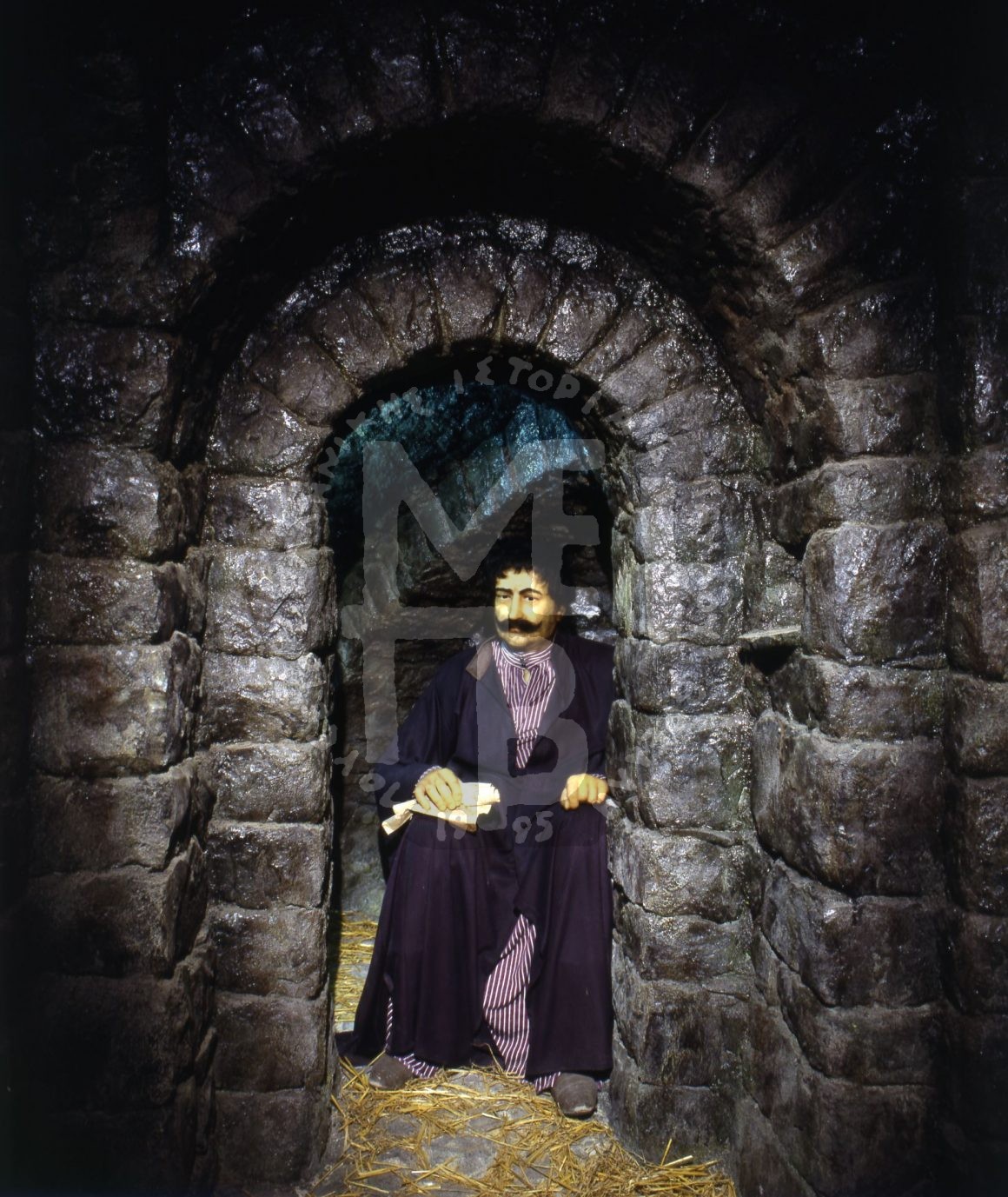“The forerunner of the Greek Revolution in1821 was born in Velestino, Thessalia, in 1757. He never called himself “Feraios” (Fere or Feras was the ancient name of Velestino). As soon as he finished school in Zagora and Ambelakia, he began teaching at the school of Kissos village. When he was about 20, departs Velestino, to visit Mount Athos and then Constantinople. While enriching his knowledge, he gets acquainted with Alexander Ipsilandis. Latter, he settled in Vlachia. In Bucharest he became secretary to the ruler of, N. Mavrogenis. His action in the countries near the Danube River began. His vision is to see all Balkan countries united sharing a common cause: to act together to set themselves free. With his innate love for freedom, it was only natural that he turned not only against the Turks but against any kind of tyranny or slavery.
In1796, he was settled in Vienna. He began to organize the revolution he had been envisaging. With the help of revolutionary texts and other works, he boosted the feeling of patriotism and the passion for Freedom. At the same time, he didn’t want the slaves to be illiterate. With his fellow workers he translated into Greek foreign writers’ works and printed several books of varied educational contents. He used the “Markidis Poulios” printer’s to print these works as well as poems of his and proclamations. His worth as elucidator was sometimes overshadowed by his revolutionary action. He is virtually a most outstanding representative of the New Hellenic Enlightment. He was always active, persuasive and fervent whose ulterior motive was to prepare and create a revolutionary organization. He is also a forerunner of the Association of Friends. Its founders were based on his spirit.
He laid down an enthusiastic proclamation aiming to incite not only the Greeks but also the inhabitants of Asia Minor and Balkan countries. He gave it the name ‘Democratic Preparatory education’. It was printed in 3,000 copies while the rest 70,000 he initially intended to print, never got printed. Basically, this piece of work consists of an introduction encouraging Christians to get rid of the Turkish yoke explaining why, and a Constitution of 124 articles in total. He had drawn up a constitution since 1793 which actually was the fundamental French law modified by him. Three words end the title of this piece of work: Freedom, Equality, and Brotherhood which denote its strongest values. The well known ‘Thourios’ is part of this proclamation. His chart is still considered of accurate topographical depiction of the part of Europe he was referring to. It was drawn in Vienna in 1797 by the chalcographer Francis Muller and printed in 1220 copies.
He planned to come to Greece in November 1797 through the Ionian Islands, but the Austrian authorities found out about his plans and since Austria considered Turkey to be a friend and ally, he was they arrested him and his partner, Christopher Perevos. They were transferred to Vienna. By December 13, 1797, seven more of his comrades had been arrested and extradited to Belgrade’s pasha, Hatzi Mustafa.
According to some sources, they were all strangled in1798. According to others they were drawn to Danube. Rigas himself managed to get away from his guard but not to escape; he was finally got shot in his cell. His body was thrown to the River Istros ‘so as not to be found and buried by the infidels’. When they got in to execute him, he said: ‘that’s how brave men die. I’ve sowed enough seeds. The time will come when they will germinate and my nation will gather sweet fruit’. These words turned out to be prophetic. His father, sister and brother-in-law were all killed some time afterwards. His death embittered the Greeks deeply. It was then they realized the real meaning of the words ‘alliance’, ‘hater of Greece’, ‘friends’…
This small place is a prison too. I didn’t rely on documents or other sources to make it. My intention wasn’t to represent accurately the place he suffered. The places he took action were those that characterize him, but they were too many to be presented here. I associate this place morphologically and functionally with the rest composition of the prisons. In order to show the depth’s subjective dimension, I divide this small space into many elements. This explains the overcrowding of the numerous parallel arches, quadrants and half arches. I paid particular attention to the floor, making it with a variety of little stones. As regards his physiognomy, I relied on a variety of sources such as painters, biographers and historians. It is quite impressive that his characteristics are the same to almost all them.“

